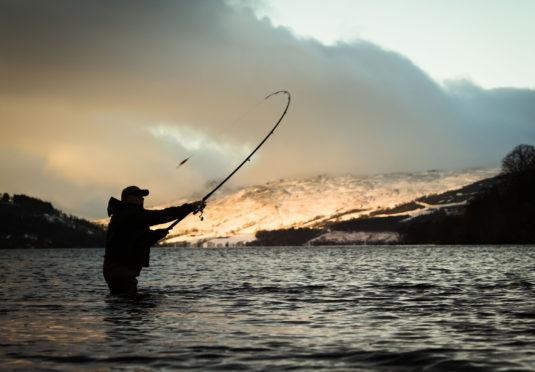
Helen Macdonald is best known for her spell-binding memoir H is for Hawk charting a year she dedicated to training a bird of prey.
But the award-winning author was equally inspired by following all four seasons on the River Tay for a BBC documentary.
She spent a year in the Scottish Highlands capturing the challenges facing the river’s wildlife – and the journey to sea and back of the Atlantic salmon.
The documentary The River: A Year in the Life of the Tay highlighted the desperate decline in wild salmon numbers and the attempts to reverse its fortunes.
In the programme, Macdonald described how the once-abundant salmon population has fallen by 70% in the last 30 years.
Speaking to The Sunday Post, she said she was moved by the plight of the salmon but had been left hopeful that “they will somehow survive this human-caused bottleneck in their populations”.
She said: “My uncle was a salmon fisherman, and he and my aunt lived in the Highlands for many years.
“He was the first person who talked seriously with me about the salmon’s decline. He was heartbroken about it.
“I was struck by how much he loved salmon; they were magical creatures for him.
“One of the things we tried to do with the documentary was get across that salmon are both biological creatures but cultural creatures, too: there’s a complicated mythology and way of life associated with them, and that is just as much under threat as the fish themselves.
“I knew before we started that salmon faced a whole suite of pressures, both in the rivers and at sea. But I hadn’t fully realised the extent of the decline, nor how rapid it has been.
“Salmon are only one creature that lives in the Tay, but without them, the river wouldn’t feel the same, would have lost something far greater than simply one species.”
The documentary crew experienced everything the Scottish weather had to offer during their year on the Tay.
Macdonald said: “Watching the seasons shift and the river grow as we followed it downstream was a privilege.
“There’s something about the timelessness of a river that inspires human contemplation.
“Obviously the shape and form of a river is far from constant, but the antiquity of the Tay makes it something like an imaginative time machine; watching its waters can provoke all kinds of meditations on history and the shortness of human life, thinking of all the humans and creatures who have lived with it before you. It’s poignant to consider how much we have lost and are losing over time in terms of biodiversity; the sheer biomass of salmon that must once have swum its course, for example, has gone.
“But the river system is healthier than it was, and that gives hope.”
The University of Cambridge research scholar believes the fall in salmon numbers is due to many factors but says climate change is the primary culprit.
She said: “I think that climate change is having the most impact, not only with rapid changes in sea temperature that force salmon to forage in more distant waters, but also with an increased frequency of droughts, high summer temperatures, and floods on the rivers, all of which are bad news for the fish.”
But the film reflects a feeling of hope as it features projects looking to explain why salmon numbers have fallen so fast and solutions to boost the population.
The River: A Year in the Life of the Tay is available on BBC iPlayer

Enjoy the convenience of having The Sunday Post delivered as a digital ePaper straight to your smartphone, tablet or computer.
Subscribe for only £5.49 a month and enjoy all the benefits of the printed paper as a digital replica.
Subscribe